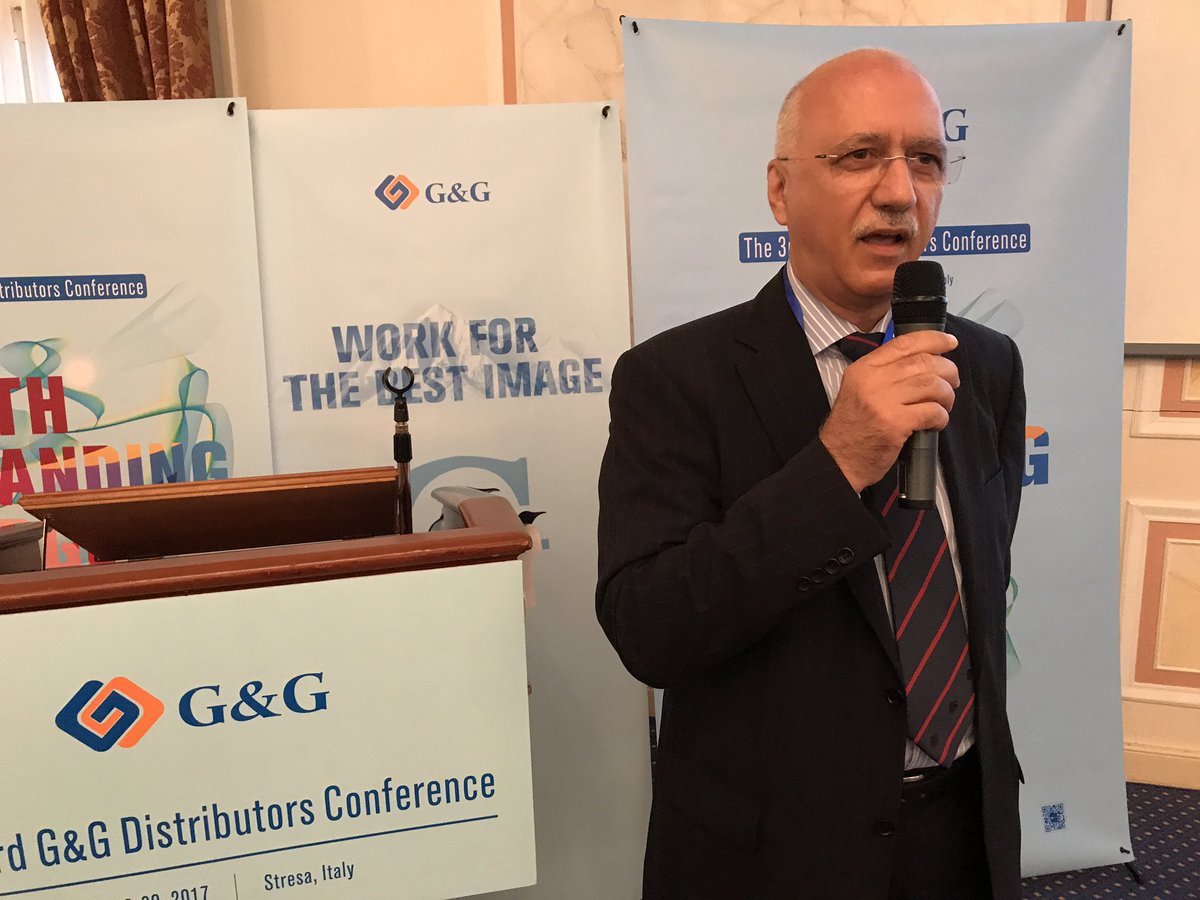Revealing the Treasures of Egypt
Ahmed Sultan is the Mr Big of the Egyptian office supplies market. According to Sultan, this market is now ranked number three for the biggest growth worldwide after India and China (2018).

Genuine OEM supplies still dominate the market by more than 75 percent and there are very few “legal” compatible brands there. Fake, counterfeit products also steal a tangible share of the supplies business there. Most counterfeit products are HP, but Xerox and Samsung are also affected. Sultan estimates the real opportunity for aftermarket products, that respect IP in the Egyptian market, could be worth US$10 million if there was an effective control over illegal counterfeit activities.
Sultan is a business graduate from Ain Shams University in Cairo and he also undertook a Business Administration Major (1994) and a Masters’ Degree in Business Administration (MBA) from the Arab Academy for Science & Technology (2007).
He worked at Xerox Egypt from March 1997 until December 2014. Where he held different roles and managed 40% of Xerox Egypt’s sales revenue. At that time, Xerox Egypt was ranked as the number one operation among all Xerox operations worldwide in its Xerox Replacement Cartridges (XRC) business. The knowledge and experience he gained from the business provided Sultan with a paradigm shift in his career. He said, “The Egyptian market needs a high-quality alternative for genuine supplies.” He started his own business and became the founder of Big Data Egypt for Systems. “My partnership with Ninestar—a real milestone—helped me to launch the G&G brand which became the most recognized legal compatible brand in Egypt,” he says.
The Market
Of the 98.4 million people living in Egypt, most are under the age of 30. The country enjoys a US$1.295 trillion domestic economy (2018), with about 5.6% growth rate during 2019. Economists and observers agree that it could possibly grow to a 7% growth rate in the next three years.
The economy is boosted in attractiveness to foreign and domestic investors due to its unique, central and strategic location between three major continents: Africa, Asia and Europe. 11% of all international trade passes through the Suez Canal for example. There is also huge potential with gas and oil exploration. Then there is the moderate weather all year, together with long, charming beaches on the Red and Mediterranean seas.
Each of the OEM printing brands saw this potential many years ago. Xerox, HP, Canon, Samsung, Lexmark, Ricoh, OKI, Konica Minolta, Toshiba, Sharp and Kyocera among others, have their offices and distributors in Egypt. All are working in this country through an official office or even through authorized distributors.
Sultan’s research on each of the OEM brands reveals:
| Brand | Overall Turnover in Imaging
(equipment, supplies, service, solutions & S/W) |
OEM “Genuine Supplies”
(direct selling or through MPS) |
| HP | US$ 52 million | US$ 30 million |
| Xerox | US$ 40 million | US$ 16 million |
| Canon | US$ 12 million | US$ 4 million |
| Toshiba | US$ 10 million | US$ 3 million |
| Samsung | US$ 7 million | US$ 4 million |
| Ricoh Affiliates | US$ 5 million | US$ 2 million |
| Lexmark | US$ 3 million | US$ 1 million |
| Konica Minolta | US$ 3 million | US$ 1 million |
| Sharp | US$ 3 million | US$ 0.5 million |
| OKI | US$ 1.5 million | US$ 0.5 million |
| Kyocera | US$ 1 million | US$ 0.3 million |
| Others | US$ 5 million | US$ 1 million |
* OEM “Genuine Supplies” means direct selling cartridges / toners in addition to genuine supplies that are included in MPS contracts
** The above table is covering official shipments but does not include the parallel market “grey / used products” which is huge. Unfortunately there is no information about its true size.
Compatible Supplies Importers in Egypt
| Company Name | Sales Turnover in Compatible Supplies | Sourced From |
| Big Data Egypt | US$ 1.2 million | G&G / Print Service |
| Q Company | US$ 0.6 million | Local Brand “Different Sourcing” |
| Engineering Company | US$ 0.4 million | SCI |
| Altra Print | US$ 0.3 million | Print Rite |
| Copycom | US$ 0.3 million | Retech |
| IMPRO | US$ 0.3 million | Katun |
| Different Companies | US$ 0.5 million | Compatible Brand less
“Premium Toner Cartridge” |
| US$ 3 million | Counterfeit Products |
Consumers look to the aftermarket to provide them with guaranteed benefits. According to Sultan, it used to be a price driven market only. However, all that is changing and while cost savings are still an important factor, they are becoming less important as consumers seek a better-quality product, consistently reliable sources, stability and patent legality.
“Page volumes are increasing as government investment in a new capital and new cities continues to take hold,” Sultan says. He adds a stronger domestic currency and support for serious local manufacturing is also a key factor.
“We still struggle, however, with suppliers who have little or no interest in intellectual property rights and the requirement to hold a license for color copier and laser printing (to control currency counterfeiting) along with the high cost of finance and importing limitations continue to threaten stronger industry development.
Facing the Future
As he considers the strengths, weaknesses and the future of this key EMEA market, Sultan is quick to respond. “Let me summarise it quickly for you,” he says. He lists off each factor on his hands as quickly as a child learning to count to ten using fingers:
- there will be more mergers and acquisitions;
- a mature industry that will target high quality standards over pricing;
- the price wars will diminish;
- MPS is the future – selling services rather than commodities;
- SOHO and SME products will provide a much-needed boom;
- key accounts will require high quality high yield cartridges;
- inkjet will continue to target the traditional laser share of the market;
- those investing in R&D will make a difference and reap the rewards;
- there will be more demand for handheld printers;
- there will be a total environmental or zero waste solution for empty cartridges.
When I asked him about the battle for market share between remanufactured and new-built products for dominion in the aftermarket sector, he said there would be no winner in the short term. “If there is genuine, there will always be an aftermarket. If there is an aftermarket, the battle between remanufactured and new-built will continue. But I expect the big win will be new-built in the long term when the American and European factories leave the game.”
He also expects further consolidation among the OEMs. “Following HP and Samsung, the outcome between Xerox and Fuji, and the rumors about Xerox and HP, you have to expect more to follow,” he reasons. “I am expecting a big fight between consolidated American brands and consolidated Japanese brands.” He adds he expects some OEM brands to disappear from the imaging equipment and supplies industry within the coming 5 years.
In the next five years, the Aftermarket will become more reliable, more advanced, more adaptable for consumer needs, more innovative and revolutionary. “I am expecting new printer brands to be designed and manufactured by aftermarket leaders, mainly in China.”
As for Big Data? “We will continue to offer the highest quality in the aftermarket space along with reliable after sales services, strong key accounts management, management stability and product availability.” Sultan says he will ignore fast profits over long term relations with customers. The MPS approach in the Middle east is catching on including the sale of paper. “Yes! Paper,” he exclaims. “The purchasing of paper is a headache for all key accounts because of all the usual price variations, the commitment of resellers, lack of continuous supply.” So Sultan is confident Big Data can handle all fears and provide a smooth customer experience they won’t get anywhere else.
Related Reading:






Leave a Comment
Want to join the discussion?Feel free to contribute!